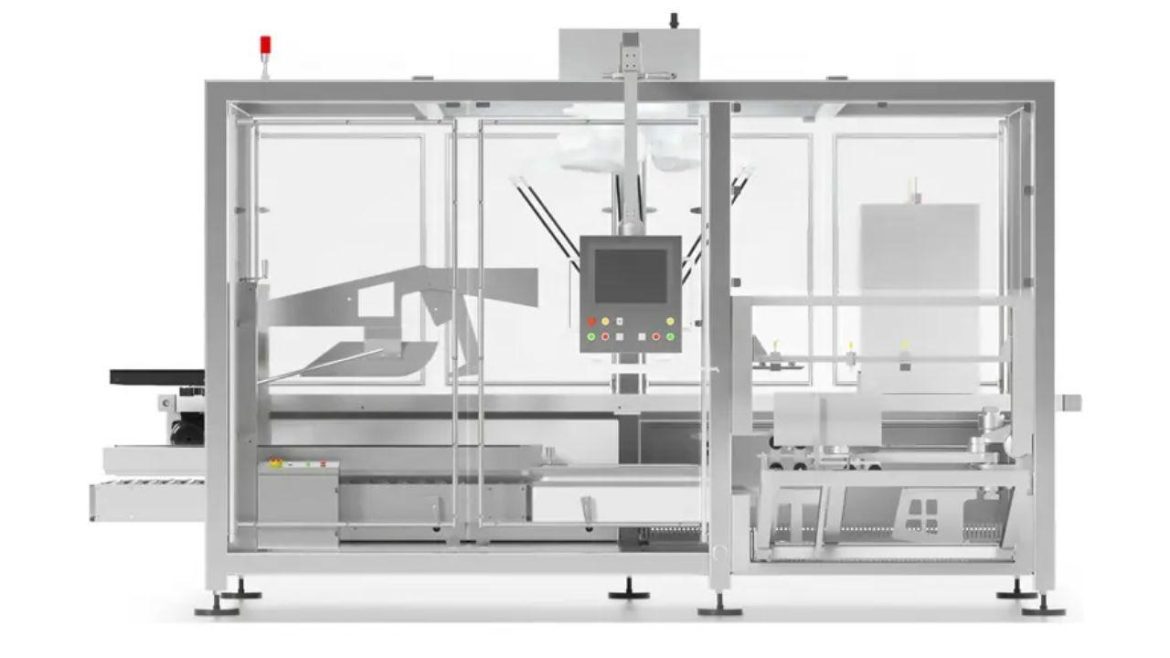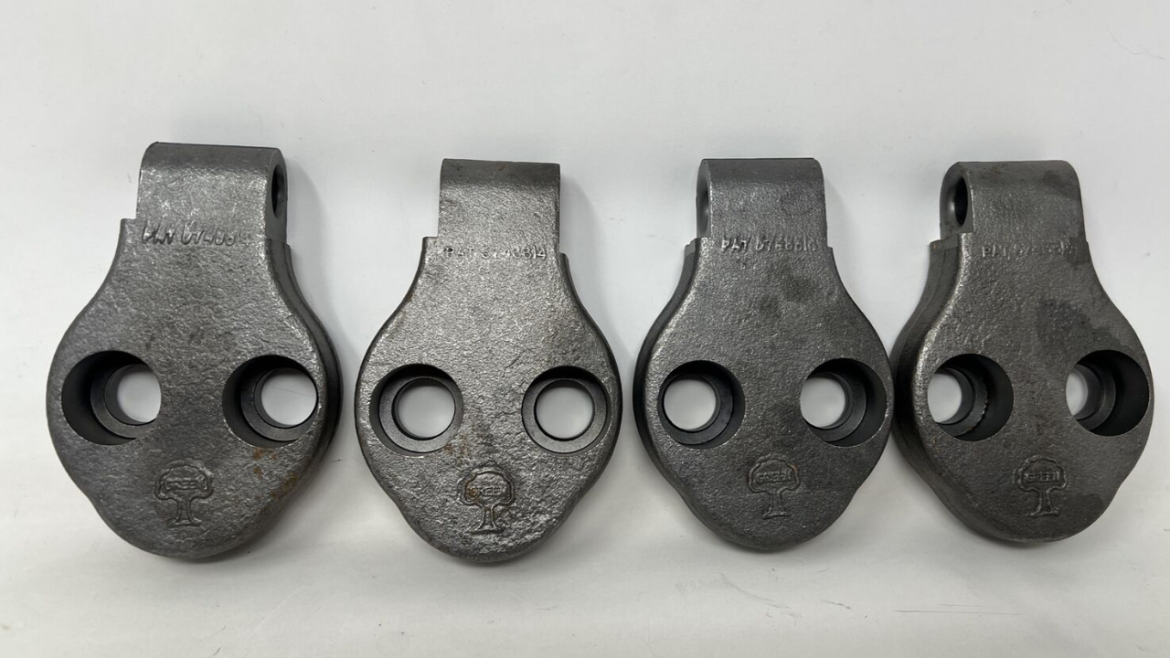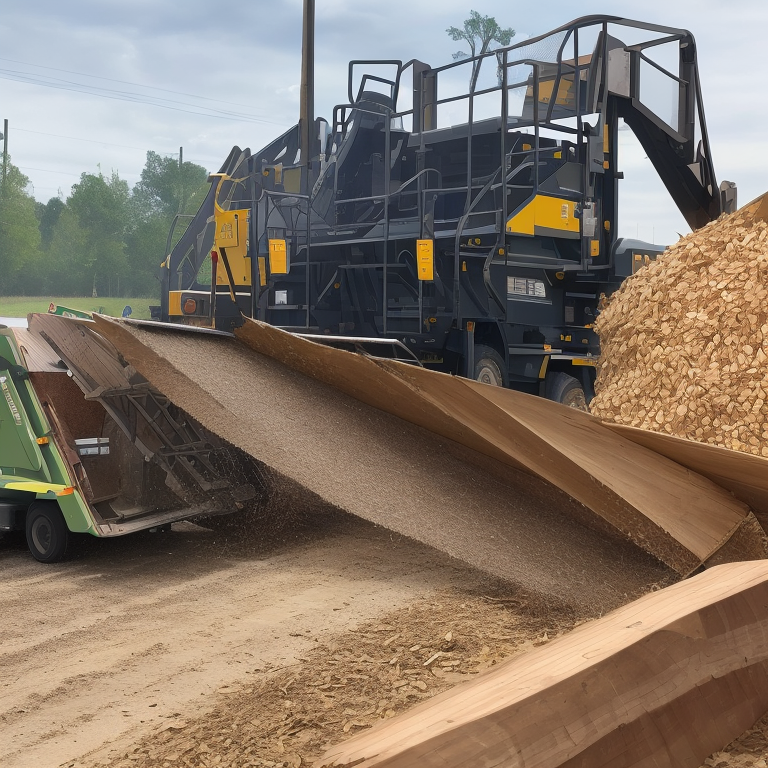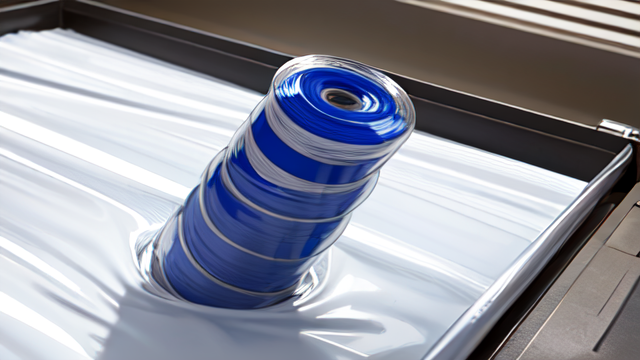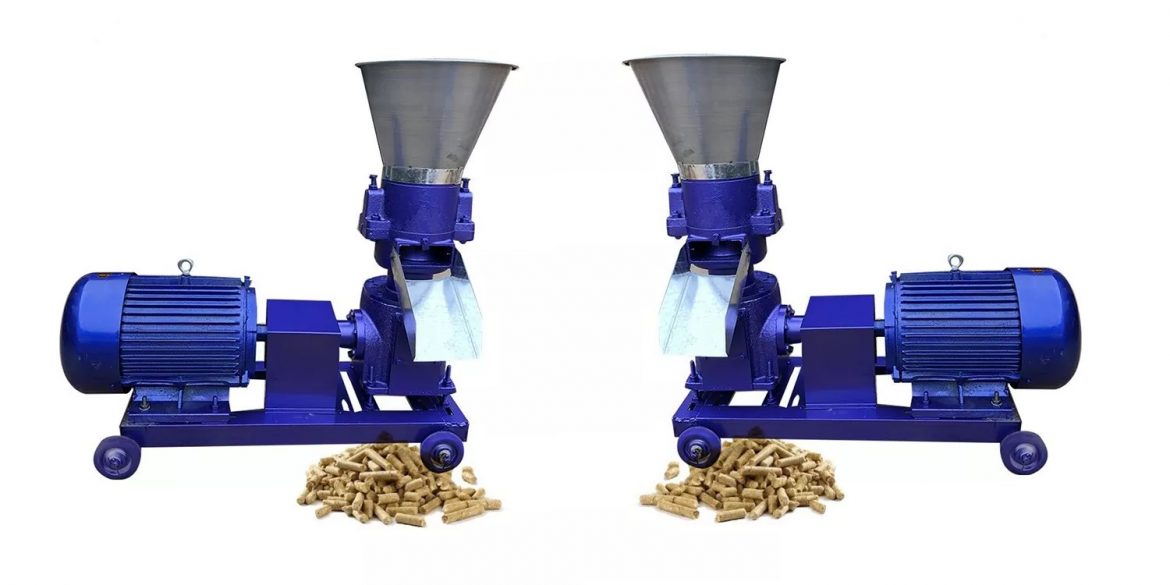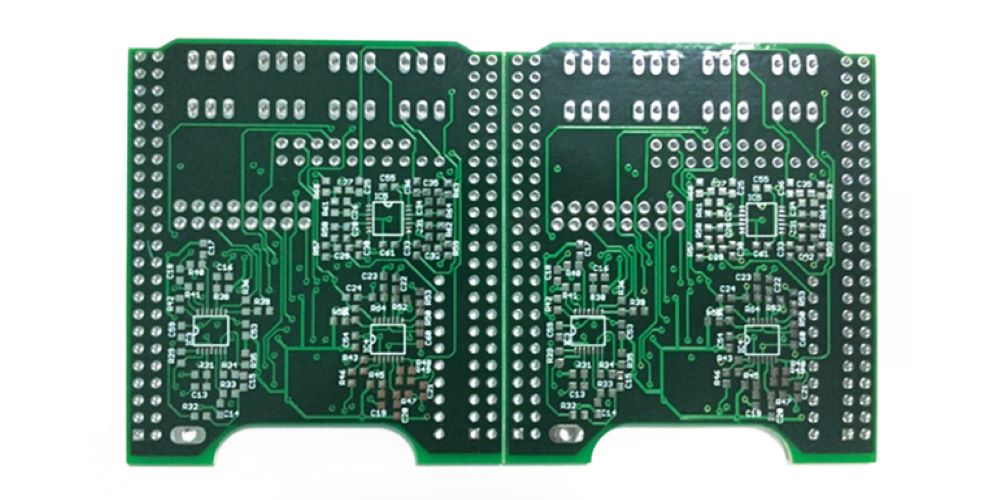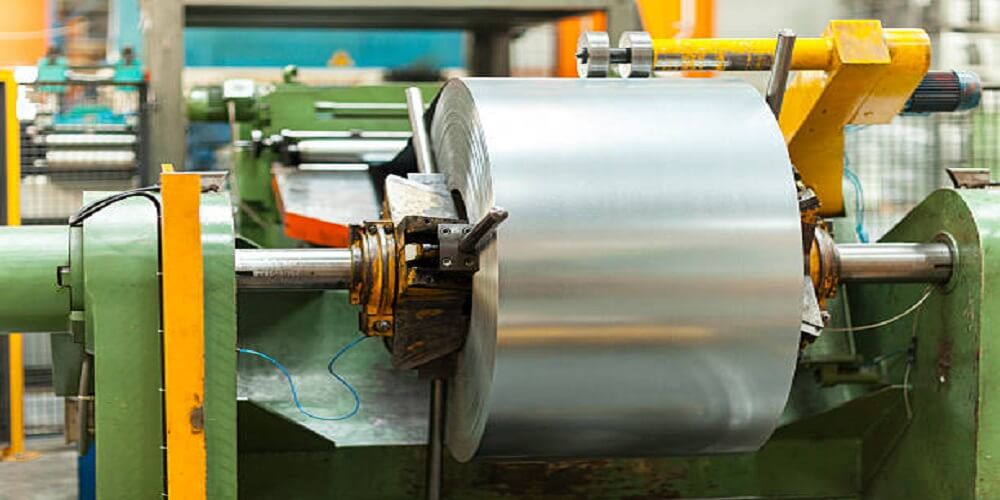industry
Identifying worn or damaged stump grinder pockets is crucial for maintaining the efficiency and safety of your stump grinding operations. Stump grinder pockets, also known as holders or blocks, are essential components that hold the stump grinder teeth in place.
Over time, these pockets can wear out or sustain damage due to the high impact forces and abrasive conditions they are exposed to during stump grinding. In this article, we will explore how to identify worn or damaged stump grinder pockets and the signs that indicate it’s time to replace them for optimal performance and safety.
Identifying Damaged Stump Grinder Pockets
By promptly replacing worn or damaged pockets, you can ensure the longevity and optimal performance of your stump grinder, enhancing your productivity and safety on the job site. You can consider given mentioned factors to identify damaged stump grinder cutter teeth and pockets:
Visual Inspection
The first step in identifying worn or damaged stump grinder pockets is a visual inspection. Examine the pockets carefully for signs of wear, such as cracks, chips, or deformation. Look for any irregularities or changes in the pocket’s shape that could affect the fit and stability of the stump grinder teeth.
Additionally, check for any signs of excessive wear, such as metal shavings or debris around the pocket area, which may indicate that the pocket is wearing out.
Loose Teeth
If you notice that the stump grinder teeth are becoming loose or falling out during operation, it could be a sign of worn or damaged pockets. Pockets that have worn out or sustained damage may no longer hold the teeth securely in place, leading to instability and increased risk of tooth loss.
Loose teeth not only reduce the grinder’s efficiency but also pose safety hazards to operators and bystanders.
Reduced Grinding Performance
Worn or damaged stump grinder pockets can affect the overall grinding performance. If you notice a decline in the grinder’s cutting efficiency or it takes longer to remove stumps, it may be an indication that the pockets are no longer providing the necessary support and stability to the teeth. In such cases, replacing the worn pockets can restore the grinder’s performance and productivity.
Increased Vibration and Noise
Damaged or worn stump grinder pockets can result in increased vibration and noise during operation. Excessive vibration can be a warning sign of misalignment or instability caused by worn-out pockets. Additionally, unusual noises coming from the grinder can indicate that the teeth are not securely held in place due to damaged pockets.
Difficulty in Installing New Teeth
If you are experiencing difficulties in installing new stump grinder teeth, it could be due to worn or damaged pockets. Over time, the pockets may wear down or sustain damage, making it challenging to properly fit and secure new teeth. If you encounter resistance or find that the teeth do not fit snugly in the pockets, it’s time to consider replacing the worn-out holders.
Regular Maintenance and Inspection
Regular maintenance and inspection of your stump grinder pockets are essential to identify any signs of wear or damage early on. Implement a maintenance schedule that includes checking the condition of the pockets, along with other worn parts, after each grinding job.
By catching potential issues early, you can address them promptly and avoid costly downtime and repairs.
Manufacturer’s Recommendations
Consult the manufacturer’s guidelines and recommendations for the specific type of stump grinder pockets you are using. Manufacturers often provide guidelines on the expected lifespan of the pockets and when they should be replaced. Adhering to these recommendations can help ensure the optimal performance and safety of your stump grinder.
Final Words
Identifying worn or damaged stump grinder pockets is crucial for maintaining the efficiency and safety of your stump grinding operations. Visual inspection, loose teeth, reduced grinding performance, increased vibration and noise, difficulty in installing new teeth, regular maintenance, and following the manufacturer’s recommendations are all essential in determining when it’s time to replace the pockets.
Achieving Optimal Efficiency in Wood Chipping: A Deep Dive into Blade Selection and Maintenance
In the world of forestry and landscaping, efficiency is king. It is the propelling force that drives productivity, curbs operational costs, and extends the longevity of your equipment. At the heart of this efficiency lies an often underestimated component: the wood chipper blades. A well-chosen and well-maintained blade can transform your wood chipping operations, significantly enhancing their overall efficiency. Visit the https://www.jyfmachinery.com/wood-chipper-blades-for-wood-chipper/ to learn more.
Choosing the Right Blades for the Job
Understanding Wood Characteristics
Different wood types each come with unique characteristics that can greatly impact how a chipper blade performs. From the dense hardwoods such as oak and ash to the softer pines and firs, each type of wood presents its own unique set of challenges for chipper blades.
Density, moisture content, and grain direction are three primary considerations when assessing a wood type. For instance, the dense nature of hardwoods demands a blade that is not only robust but also incredibly sharp. Wood with high moisture content can dull a blade faster, while a wood type with unpredictable grain direction could potentially cause blade damage. An understanding of these specific characteristics is essential for selecting the right blade for the task at hand.
Choosing a Blade Design That Matches Your Needs
The blade design is not just an aesthetic choice. It’s an element of engineering that significantly influences the efficiency of your wood chipper. Certain blades are designed with sharp cutting edges, optimal chipper angles, and sturdy construction to handle tougher tasks, delivering superior performance and longevity.
To maximize efficiency, select a blade design that aligns with the kind of wood you’ll be chipping and the tasks you’ll be performing most frequently.
Maintenance and Sharpness of Blades
Maintenance, particularly blade sharpening, is a fundamental factor in the lifespan and effectiveness of your chipper blades. Keeping your blades sharp boosts the efficiency of your wood chipper considerably.
Blade sharpening is a precise task, requiring attention to maintaining the correct angle for optimal cutting performance. Although the frequency of sharpening varies depending on the type of wood and intensity of usage, a general rule of thumb is to sharpen the blades after approximately 25 hours of operation.
Adopting Best Practices in Operation
Your operational techniques can make or break the efficiency of your wood chipper. Proper feeding techniques such as presenting the branches butt-end first and not overloading the machine can enhance the chipper’s output and lifespan.
Safety must always be front and center when operating a wood chipper. Ensure you’re outfitted in the proper safety gear, and always make sure the chipper is switched off and disconnected from power before performing any maintenance or blade changes.
Incorporating Advanced Techniques for Greater Efficiency
Advanced techniques can offer an additional edge to your chipper efficiency. For instance, keeping multiple sets of blades on hand for different wood types can minimize premature wear and tear. Incorporating sensor-based systems can also offer real-time feedback to optimize chipper settings and blade usage.
Conclusion
To sum it up, the road to superior wood chipping efficiency is paved with thoughtful blade selection and meticulous maintenance. A comprehensive understanding of wood characteristics, a careful choice of blade design, dedicated maintenance of blade sharpness, and adherence to best operational practices can revolutionize your wood chipping productivity. Harnessing these insights and leveraging the power of technology can ensure that your wood chipper operates at peak performance, propelling your operations to new heights of efficiency.
Strapping plays a critical role in various industries, with its primary function being the packaging and securing of products during storage and transportation. A strapping supplier is a company that provides different types of strapping material like steel, polyester, polypropylene, and other necessary packaging tools. The quality and reliability of strapping can significantly influence the safety and integrity of products. Therefore, the importance of choosing a reliable strapping supplier cannot be overstated. This article aims to shed light on the role of strapping in packaging, the consequences of choosing an unreliable strapping supplier, and the benefits of partnering with a reliable supplier. Visit the https://www.keeptoppackaging.com to learn more.
The Role of Strapping in Packaging and Securing Products
Strapping, also known as banding, is used across multiple industries, including construction, logistics, retail, food, and beverage, among others. It ensures that products are secured tightly in a package, crate, or pallet, preventing them from shifting during transportation. Strapping helps maintain the product’s original condition, preventing potential damage or loss, and thus directly impacting customer satisfaction.
There are different types of strapping materials available based on the nature of the product and the conditions of transportation. For instance, steel strapping is often used for heavy or sharp products, while polypropylene strapping is used for lighter products. The selection of the right strapping material is essential to provide adequate protection to the products.
Consequences of Choosing an Unreliable Strapping Supplier
The choice of strapping supplier is not a decision to be taken lightly. Partnering with an unreliable strapping supplier can lead to several adverse consequences. Unreliable suppliers may provide substandard strapping materials, which can compromise the safety and integrity of products. Poor quality strapping might break or loosen during transit, leading to product damage, accidents, and potential financial losses.
Additionally, unreliable suppliers may fail to deliver on time, disrupting the supply chain and resulting in delayed product delivery to end customers. It can harm your company’s reputation and customer relationships. In some cases, it may also lead to contractual penalties if the company is unable to fulfill its obligations due to delayed or substandard supplies.
Benefits of Partnering with a Reliable Strapping Supplier
On the other hand, partnering with a reliable strapping supplier comes with numerous benefits. First and foremost, a reliable supplier ensures the provision of high-quality strapping materials that can secure your products effectively. This can significantly reduce the risk of product damage, accidents, and the associated costs.
Reliable strapping suppliers can offer valuable guidance in choosing the right strapping material for your specific needs. They understand the nuances of various industries and can provide solutions that are tailored to your business.
Furthermore, reliable suppliers have robust delivery systems in place. They can ensure timely delivery of strapping materials, which can help maintain the smooth functioning of your supply chain. This reliability can enhance your business’s efficiency, credibility, and customer satisfaction levels.
Lastly, a dependable strapping supplier often provides excellent customer service, offering assistance and support when you need it the most. They may also offer training on the use of strapping tools and equipment, ensuring that your team is well-equipped to handle the packaging effectively.
Conclusion
In conclusion, the choice of strapping supplier is a strategic decision that significantly impacts a business’s operational efficiency, product safety, and customer satisfaction. Therefore, it’s essential to take the time to research and choose a reliable strapping supplier. While cost considerations are important, the reliability, quality of materials, and service level of the supplier should not be compromised. The right partner can add value beyond the provision of strapping materials, contributing to the overall success of your business.
The pellet industry is one of the most rapidly growing industries in today’s times. People are looking for alternatives to fossil fuels, and biomass fuels are a great alternative to it. Biomass is converted to pellets, which can be used as fuel in a lot of industries.
Yulong pellet mill for industry are one of the best choices of machinery for making pellets. These pellets are used as fuel in heating homes and offices, cooking, as animal feed, as bedding for animals, and also as fuel in biomass energy plants. Yulong pellet mills and other machinery are often considered an industry leader because of their reliability and efficiency.
How To Buy Yulong Pellet Mill?
If you are from China, you would be able to get in touch with the company and describe your requirements. They will help you get your required model of pellet mill. If you are from some other country, you would have to get in touch with local distributors and importers to procure the pellet mill you need.
Yulong has their dedicated store and showrooms in several global locations. If you are a business owner, you might be able to strike a deal with the company directly and get customized pellet mills for your company’s needs. It is not really a big issue to procure Yulong pellet mills for your business, or home. These mills are very versatile, and can be used in a wide range of industries, like in agriculture, farming, fisheries, energy plants, and animal husbandry to name a few.
Features Of Yulong Pellet Mill
Yulong pellet mills have become an industry leader due to their stellar performance and dependability. Here are a few features which make them stand out from the rest.
1. Safe Operation
Yulong pellet mills use top of the line technology and come with features like AI-aided smart working and automation. This means that users only need to give their instructions once, and the mill will work independently from next time. Of course, with smart functioning, it will also be able to adjust with any differences in the load of the input materials.
2. Easy To Install
Yulong pellet mills are really easy to install in their workplaces. They are usually shipped and delivered with no delays, and come with proper instructions for setting up the device. The pieces are easy to assemble, and can even be done by an amateur. If you have purchased your Yulong pellet mill from a local distributor, you might also get technical help from local service technicians.
3. Easy To Transport
One of the most ergonomic features about Yulong pellet mills is that they are extremely easy to transport. Several parts of the machine can be easily assembled and disassembled. The rest is very compact and easy to carry. If there are renovation or shifting plans for a business, Yulong machineries makes the task seem easy.
4. No Wastage
This is one of the best features of the Yulong pellet mills. The do not produce any wastage, and completely use the input ground or powered-down materials to produce the corresponding kinds of pellets.
Conclusion
Yulong pellet machines really seem to be a different standard of their own. Its features and technical specifications make it better than most other industrial-grade pellet mills. Further, Yulong per-sale and after sale services and customer care makes it worthy to trust Yulong. Yulong pellet mills are always a welcome and great addition to any business or industry.
Technology has helped numerous sectors advance their practices. In fact, industries that have embraced technology are getting business deals like never before. One such sector is the garage door manufacturing industry. Garage door manufacturers have learned to incorporate technology into their practices. That has prompted inventions like raised panel garage doors. With these doors, you enjoy the thermo lock insulation technology, making them stand out from most garage doors in the marketplace today.
How technology from garage door manufacturers is changing the face of garage doors
You are probably stuck with your old garage door and wondering why you should replace it with a modern one. At times, a new project you are handling will also force you to decide what you want. We understand that it’s confusing, but let us discuss why garage door manufacturers are currently prioritizing technology to help you appreciate the changes.
Allows for convenience and comfort
One of the most significant benefits of technology is that they offer convenience. Technology has allowed garage door manufacturers to prioritize convenience when manufacturing their products. For instance, automatic garage doors are perhaps the most convenient. Users do not have to carry around many house keys to open their garage doors. Instead, automated garage doors only require a remote code and a phone to open. They do not require any physical effort; this is perhaps the most convenient thing about garage door technology. For many people, convenience is a priority. For this reason, garage door manufacturers use technology to provide clients with maximum comfort.
It makes the door’s operation easy
Another reason garage door manufacturers prioritize technology is because it makes their doors easy to operate. Garage doors are not like regular house doors or gates. In most cases, they are usually heavier and larger, making them cumbersome to operate. Technology has allowed manufacturers to produce high-quality garage doors while considering their ease of operation. The same bulky doors can now be handled with less physical effort without worrying about their weight. This has been a great pull for clients.
Allows for unique productions
Manufacturers in garage door sectors also incorporate technology because it helps them make unique doors. The creative application of technology in manufacturing allows companies to create products that stand out. For instance, garage door manufacturers can develop automatic and smart doors. The more unique the products are, the more clients they attract. Unique doors also attract a positive reputation.
It reduces production costs
Technology also helps manufacturers in various sectors reduce their production costs. Techniques like 3D printing allow them to produce products autonomous of human resources. In the garage door manufacturing sector, technology is not only applied by the customers but also by the manufacturers in their production processes. That helps them reduce their production costs. Clients get the doors at reduced prices when production costs are low.
Final words
Garage door manufacturers now produce technical products like smart and automatic garage doors to increase clients’ home value, convenience, and lower operational energy. Many homeowners currently opt for technical garage doors over traditional ones. Talk to us today to buy the best garage doors.
The Subscription Business is an excellent choice if you are looking for a way to make money online. This type of business requires a recurring price and regular access. This model is popular among entrepreneurs who want to sell a product or service. The main difference between a subscription and a freemium is that the latter requires a one-time payment. However, it does not mean that you cannot get rich quickly with a subscription business.
Cost of the product or service
There are several important considerations when it comes to pricing your subscription service. The first factor is the cost of the product or service. You will need to calculate the cost of products or services to sell and run your business. This includes advertising costs. You should also consider the profitability of your subscription service. If you can charge as much as you can afford for a particular product or service, you will probably enjoy higher profit margins. The key is to maintain flexibility and be willing to change the price if necessary.
Product for target market
When evaluating a subscription business, it’s important to determine whether your product is a good fit for your target market. It is important to be realistic about your target market and decide on an appropriate price point. In addition, you should be aware of the competition and research your customers’ buying habits. Once you have a clear idea of what your customers are looking for and how you can meet their needs, it is time to launch your subscription business.
Price point
Lastly, pricing is another crucial factor for a subscription business. When starting out, it is best to set prices that feel right to your target audience. Don’t overprice your product because this will discourage potential customers or even make them reluctant to buy your product or service. As long as you have a reasonable price, your subscription business will grow. Keep in mind that prices rarely stay the same for long. As the market changes, so will your customers’ expectations.
Profit
When starting a subscription business, the key to success is finding out what your audience wants and giving it to them. By analyzing your analytics data, you’ll be able to determine which products are most profitable and which are not. A good approach is to create a loyalty program and offer discounts that are exclusive to members. As far as pricing your subscriptions, make sure that they’re reasonable and affordable for your audience. There are many reasons to consider a subscription business, and it may be the best option for you.
Relationships between you and customers
If you’re considering the Subscription Business, you need to focus on building a relationship with your customers. A subscription business depends on the relationships between your company and its customers. If you don’t treat your customers well, they’ll end up canceling their subscription. By understanding your customers’ needs, you can tailor your pricing and retention strategies to suit them. This way, you’ll be able to retain your customers and earn a profit.
A subscription business requires a strong customer relationship with your customers. If your subscribers are unhappy with your subscription, they’ll cancel it. This means that you need to focus on retaining your customers. Creating a buyer persona is a great way to do this. Having a customer profile is crucial for improving your pricing strategy and customer service. This will help you better understand your target audience and the kind of service they need.
While a subscription business is a great option for those seeking to make money online, you need to remember that the success of your business depends on strong customer relationships. It’s crucial to retain customers as long as you can, otherwise they’ll cancel their subscription. A buyer persona is a buyer’s perspective and can provide a lot of insight into your audience. In addition, a buyer persona is a customer’s personality and needs.
Conclusion
The Subscription Business requires a high level of customer loyalty, which will make it profitable. It is also a good choice for small businesses that are trying to get the attention of younger, millennial consumers. The pricing model should be flexible and reflect the needs of your customers. It’s also important to understand how customers react to your offerings. They should not be put off by your price. If they don’t, your subscriptions won’t be effective.
Forging is a highly applicable manufacturing technique. There are numerous forging applications from the forged gear used in ship construction, the automobile and electric-component manufacturing sector, and forged car parts. The high range of applicability can be attributed to the availability of a wide range of forging techniques. The presence of several forging equipment also comes in handy.
Types of forging equipment
Below are some of the main equipment used in forging;
1. Hammer and anvil
This is one of the vital equipment used in forging. The hammer is used to deliver the force used for deforming the metal. The hammer is usually raised and dopped or propelled into the workpiece. The force applied to the workpiece causes it to get deformed and adapt the shape and form of the die design. The workpiece is usually placed in the die, between the hammer and the anvil.
Therefore, when the metal is struck, it starts to take the shape of the die. The hammers usually differ from one type of forging machine to the next. However, the difference is not usually that significant as it is mainly based on the powering technique. Some hammers are powered by hydraulic energy, while others are mechanically or pneumatically powered.
On the other hand, the anvil is where the metal piece lies as the hammer strikes it. It usually consists of a large block of metal with a flattened top surface. The metal is mainly forged or cast steel.
2. The die
A die is a pre-shaped tool that works with the press to manipulate a workpiece into a desired shape and size. The die is usually designed depending on the design provided by a client or based on the end product’s design. Therefore, it is critical equipment in forging as it makes the designing or production process possible. The die is usually designed with caution and precision, as any mistakes could significantly influence the forging process. Mistakes in the die design could also result in a lot of financial losses.
Different types of dies can be used in forging. Some of these types are; closed and open dies.
3. The power mechanism
The role of the power mechanism is to facilitate the movement of the hammer. As mentioned above, there are three types of power mechanisms that can be used in forging machines. They are; mechanical, hydraulic, and pneumatic power. The manufacturer and the desired outcome usually determine the type of power mechanism used.
4. Lubricant
While the lubricant is not a typical form of equipment, it is a significant part of the forging process. The role of the lubricant may differ depending on the forging technique. Regardless, the standard roles of the lubricant are to allow the metal piece to slide on the die and cool it during the forging process.
Conclusion
Note that the type of equipment used in forging may differ depending on the forging technique. For instance, in some forging techniques, presses are used in the place of dies. Gear produced by forging is known for its superior strength, duality, and effectiveness.
Generally, two-layer PCBs are made from materials like plastic or metal. However, the manufacturing process and final product can be different. The characteristics of 2-layer PCB are determined by the type of materials used and the technique applied for the same. This PCB material is available in various forms like silicone, powder, flat pack, enameled, fabric, or lead-free. Further to get to know about 2-layer PCB characteristics, you can click it.
However, the benefits of these PCB products are discussed below:
Application of 2-Layer PCB in Different Fields
These types of PCB have the advantages of low cost, noise immunity, thermoplastic property, attachment to various substrates, rigidness, resistivity to thermal shock, etching, lamination to various media, etc. It can be used in different applications such as electronic devices, medical devices, FOLK devices, consumer electronics, automotive applications, firewalls, heating applications, etc. it has the ability to resist extreme heat, is water-resistant, anti-static, has anti-bacterial and anti-irritation properties, which makes it ideal for use in places like military, aviation, electrical industries, semiconductor, and optoelectronic industries.
Low Cost of Production
As mentioned above, there are several benefits of using these PCBs. But, the first benefit of this item is the low cost of production. Since the PCB material is thin, you can cut the required PCB within a short time without having to worry about the result. It is also easy to manufacture the PCB by using the right equipment and tools. Hence, you will not have to worry about tooling and additional investment in case you want to scale up your production process.
Flat-Pack PCB
As compared to the other types of PCB, the flat-pack PCB offers maximum durability. It is designed with thicker layers of plastic or metal. As a result, the finished product can be expected to withstand tremendous heat, moisture, chemicals, electricity, and many other hazardous substances. However, the greatest advantage of flat pack PCB is that it is easy to install and remove. Therefore, you do not have to worry about any seam damage while switching products. This makes it a versatile item for all types of businesses.
Different Designs & Customize Look of 2-Layer PCB
You will also benefit from a variety of available PCB designs. You can choose from a variety of different designs to customize the look of your PCB. You can even create your own unique design and submit it for the approval of the manufacturer. Once your design is approved, your PCB manufacturer will create a batch of custom-printed components that meets your exact requirements.
Flexible Surface of 2-Layer PCB
A PCB has a flexible surface because the layers are printed on an aluminum or plastic surface. This enables the components of the PCB to be printed directly on the surface without any support whatsoever. Since the printed surface of a PCB is perfectly flat, it provides users with a surface that is smooth and dust-free.
2-Layer PCB – An Effective Mechanical Tool
The benefits of having a PCB can clearly reveal themselves once you start using it in your business operations. Apart from saving time and money, you will also discover that it has many other advantages. For instance, a PCB is designed in a way so that it can be used as a desktop or laptop carrier. Moreover, a PCB is an effective electrical and mechanical tool for handling delicate electronic components and even fragile hardware. All these characteristics of a 2-layer PCB make it a very useful item for all kinds of industries.
When it comes to hydraulics process machines, these have their own pros and cons in comparison to mechanical presses. But, the advantages of the hydraulic press outweigh the disadvantages, which is why more and more manufacturers are switching to hydraulic presses. The hydraulic press machine price is another big factor why manufacturers are dumping mechanical press machines.
In this article, we will be looking at these advantages as well as taking a look at what are the downsides of these powerful machines.
Let’s start with the advantages of using a hydraulic press machine.
Advantages Of Hydraulic Press Machine
- Better Control: In comparison to a mechanical press or punch press, a hydraulic press offers better control over the power and pressure that you can apply to the material. This results in a more accurate and high-quality end product. If the work to be done is intricate and the raw material is scarce, it’s best to use a hydraulic press. Using a mechanical press can result in cracks in the material if not controlled properly.
- Same Pressure Per Inch: This is the primary reason why manufacturers prefer hydraulic presses to other press machines. When you use a hydraulic press, the pressure applied on a metal sheet or any other material sitting at the press plate is the same from every direction.
In other words, whether you want to crush one ball bearing or ten at once, the final result will be exactly the same for every ball bearing. The same doesn’t apply to a mechanical press.
- Versatility: Hydraulic press machines are much more versatile than any other press machine. They are programmable for clinching, punching, molding, elongating, staking, and a lot more. Hydraulic press machines come with various tools and die that you can use to create whatever your needs are.
- Quick & Cost Efficient: Depending upon the size of the press plate, a hydraulic press machine can finish a lot more work in less time. Moreover, because the majority of operation is automated, the need for labor is reduced too. So, it finishes the work quicker than human labor and takes away the labor cost too.
It’s not just the running costs that are low. Hydraulic press machines are cheaper than any other press or manufacturing machines. So, you save money in the short run as well as the long run.
Disadvantages Of Hydraulic Press Machines
All is not well with hydraulic press machines. Just like everything else, these too have their own problems and disadvantages.
- Overheating: Hydraulics press machines can overheat easily. The higher pressure and quicker speeds come at the cost of having to be careful not to overpressure the machine.
- Higher Energy Consumption: A hydraulic press machine consumes more electrical power than any other type of press. Another side effect of generating more power than the alternatives.
- Fluid Handling: Hydraulic fluid is the most important component of a hydraulic press, and it also requires the most maintenance. It needs regular changing, and you have to make sure it isn’t leaking- otherwise, the whole machine will end up damaged, and the operations will come to a halt.
Conclusion
All things considered, a hydraulic press machine has more advantages than it has disadvantages. Secondly, if you look at the disadvantages, most of them are avoidable with careful use.
